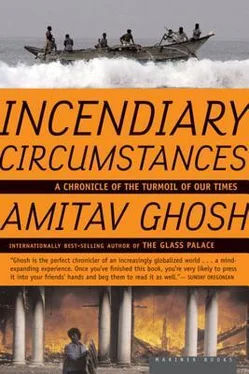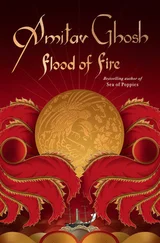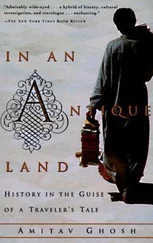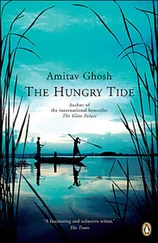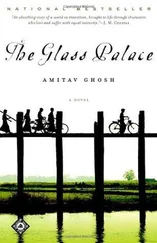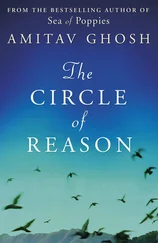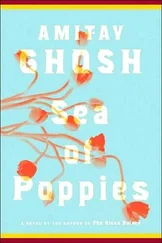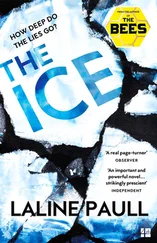This depiction of the violence of 1983—and to my mind Funny Boy is one of the most powerful and moving accounts of those events — was published in 1994 in Canada, where Shyam Selvadu-rai's family had settled after leaving Sri Lanka. I draw attention to this only to underscore two facts: that Funny Boy was written by a recent immigrant to North America and that it is an act of recollection that tells the story of a departure. These facts appear unremarkable, yet there is to my mind a puzzle here, and it lies in this: an immigrant's story is usually a narrative of arrival, not departure. And nowhere is this more true than in North America.
North America is famously peopled by immigrants, and nowhere else on earth is the experience of immigration so richly figured as it is here: in popular culture, literature, film, and indeed every aspect of public life. In photography, the emblematic image of this experience is that of a family of immigrants standing on the deck of the ship that has brought them across the Atlantic. In these pictures the immigrants' eyes are always turned in the direction of the waiting shore, toward the Statue of Liberty and the towers of the shining city ahead. Many of these immigrants have suffered terrible hardships, yet we would search in vain for similarly powerful images taken at the hour when they boarded the ship: that moment holds only passing interest in this story. This is because, classically, narratives of immigration to North America are stories of arrival, not departure, stories of suffering but not sorrow or regret; they are stories of hope, founded on a belief in the redemptive power of the land ahead. The vitality of these stories derives in no small part from the obvious parallels with the Biblical story of the Promised Land, which is, of course, equally a story of hope and of arrival. Those who followed Moses out of Egypt did not linger to cast glances of melancholy longing upon the Nile. They looked only ahead; their memory of Egypt was of unmitigated suffering; there were no times of joy there to be recalled in wretchedness. The mark of an exodus lies in the direction of these eyes, looking ahead toward the far shore, confident in the belief that the bonds of community will not perish in the process of migration. But this is not the direction in which Selvadurai's narrator has turned his gaze. Here is the novel's penultimate sentence: "When I reached the top of the road, I couldn't prevent myself from turning back to look at the house one last time." And this is how he ends his story, with the narrator looking back, through the rain, at the charred remains of a home that was once filled with happiness.
It is the direction of the gaze that identifies this as a story not of an exodus but of a dispersal, the story of an irrevocable sundering of the dual bonds that tie members of a community to each other and to other like communities. In the experience of an exodus there is an unspoken ambiguity: the sufferings of displacement are tinged with the hope of arrival and the opening of new vistas in the future. A dispersal offers no such consolation: the pain that haunts it is not that of remembered oppression; it is rather that particular species of pain that comes from the knowledge that the oppressor and the oppressed were once brothers. It is this species of pain, exactly, that runs so poignantly through the literature that resulted from the partition of the Indian subcontinent in 1947. We know, from that line of Boethius which Dante was later to give to Francesca da Rimini, that among fortune's many adversities, the most unhappy kind is to nurture the memory of having once been happy.
This is where recollection turns its back on history, for it is the burden of history to make sense of the past, while the memory of dispersal is haunted always by the essential inexplicability of what has come to pass; by the knowledge that there was nothing inevitable, nothing predestined about what has happened; that far from being primordial, the enmities that have led to the sufferings of the present are new and unaccountable; that there was a time once when neither protagonist saw the other as an adversary — a time that will be irrevocably lost with the dissolution of the history that made it possible for many parts to be a whole.
That which I, in the fever of my pride, am struggling to put into words has been much better said in Agha Shahid Ali's poem "Farewell":
At a certain point I lost track of you.
You needed me. You needed to perfect me:
In your absence you polished me into the Enemy.
Your history gets in the way of my memory.
I am everything you lost. You can't forgive me.
I am everything you lost. Your perfect enemy.
Your memory gets in the way of my memory…
There is nothing to forgive. You won't forgive me.
I hid my pain even from myself; I revealed my pain only to myself.
There is everything to forgive. You can't forgive me.
If only somehow you could have been mine,
what would not have been possible in the world?
There is nothing arbitrary, then, about the ending of Selvadu-rai's novel — the story ends here because it must. To carry it any further would be to link it to the present and the future, to imply the possibility of a consolation. And this, of course, the writer could not do, for the reason that there is no greater sorrow than the recalling of times of joy is precisely that this is a grief beyond consolation.
In 1983, at the time of the Colombo riots, I was hard at work on my first novel, The Circle of Reason. I was living in New Delhi, where I had succeeded in finding a minor appointment at Delhi University. Some of my colleagues and mentors at the university — Veena Das and Ashish Nandy, for example — had close connections with human rights activists in Sri Lanka. They were thus able to acquire many of the documents, records, and testimonies that were produced by Sri Lankan researchers. Newspaper accounts of the riots were shocking enough, but the picture that emerged from these independent reports was more menacing still. They left no doubt that some parts of the machinery of state had been used to target a minority population. I don't remember whether we asked ourselves what would happen if this pattern were to spread through the subcontinent. The question was perhaps too grim to pose in an India that was beset by insurgency, calamity, and terror.
A year later, with Indira Gandhi's assassination, the tide crested on our own doorsteps. I remember that day graphically: I remember taking the bus across Delhi; I remember the eerie silence in the university, I remember the evil that gleamed in the eyes of the thugs who began to attack Sikhs wherever they could find them. I have written about these events in detail elsewhere (see "The Ghosts of Mrs. Gandhi," [>]) and will limit myself here to noting only the close parallels between the patterns of violence in Colombo in 1983 and in New Delhi in 1984. In both instances, inexcusable crimes were committed by insurgent groups in the name of freedom; in both cases, the information-gathering function of government was turned to the sinister purpose of targeting minority populations; in both there were clear instances of collusion between officials and criminals.
Through the riots and their aftermath, I, like many of my friends and colleagues, worked with a citizens' relief organization called the Nagarik Ekta Manch. After the immediate crisis was over I returned to the manuscript I was working on. This novel, The Circle of Reason, was the story of a journey, and its central section told the story of a group of immigrants — South Asian and Middle Eastern — living in a fictitious oil-rich sheikdom in the Gulf. Looking back today, it strikes me that The Circle of Reason could, within the parameters that I have used here, be identified as an exodus novel, a story of migration in the classic sense of having its gaze turned firmly toward the future. The book ended with the words "Hope is the beginning."
Читать дальше
